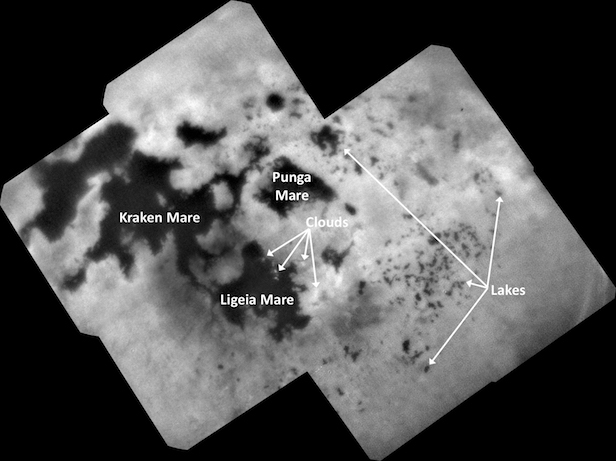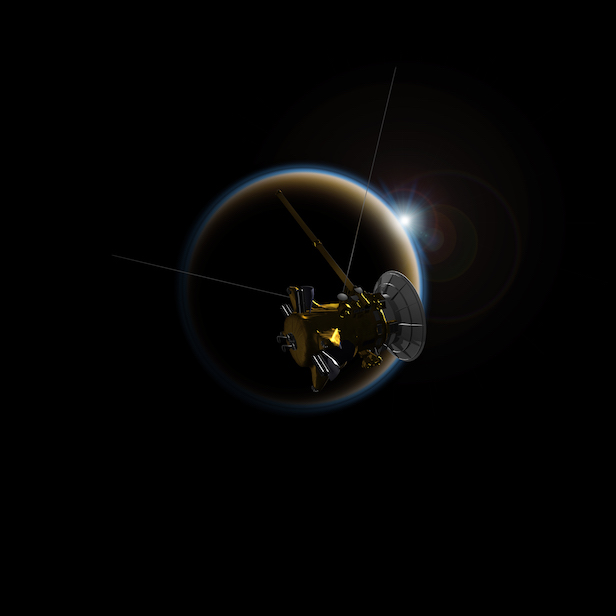Cassini’s concluding view of Titan
The last flyby of Saturn’s moon, Titan, showed its northern lakes and seas made up of liquid methane and ethane

Four days after Cassini took the last images of Titan, it was plunged into the atmosphere of Saturn. Image credit: NASA/JPL-Caltech/Space Science Institute
During NASA’s Cassini mission’s final distant encounter with Saturn’s giant moon Titan, the spacecraft captured the enigmatic moon’s north polar landscape of lakes and seas, which are filled with liquid methane and ethane. They were captured on 11 September 2017. Four days later, Cassini was deliberately plunged into the atmosphere of Saturn.
Punga Mare (390 kilometres, or 240 miles, across) is seen just above the centre of the mosaic, with Ligeia Mare (500 kilometres, or 300 miles, wide) below centre and the vast Kraken Mare stretching off 1,200 kilometres (730 miles) to the left of the mosaic. Titan’s numerous smaller lakes can be seen around the seas and scattered around the right side of the mosaic. Among the ongoing mysteries about Titan is how these lakes are formed.
Another mystery at Titan has been the weather. With its dense atmosphere, Titan has a methane cycle much like Earth’s water cycle of evaporation, cloud formation, rainfall, surface runoff into rivers, and collection in lakes and seas. During Titan’s southern summer, Cassini observed cloud activity over the south pole.
However, typical of observations taken during northern spring and summer, the view here reveals only a few small clouds. They appear as bright features just below the centre of the mosaic, including a few above Ligeia Mare.

During its 13 years at the Saturnian system, Cassini made 127 flybys of the moon Titan. Image credit: NASA/JPL-Caltech
“We expected more symmetry between the southern and northern summer,” says Elizabeth Turtle of the Johns Hopkins Applied Physics Laboratory, Maryland, United States, and the Cassini Imaging Science Subsystem (ISS) team that captured the image. “In fact, atmospheric models predicted summer clouds over the northern latitudes several years ago. So, the fact that they still hadn’t appeared before the end of the mission is telling us something interesting about Titan’s methane cycle and weather.”
“Titan is a fascinating place that really teases us with some of its mysteries,” says Turtle.
The images in this mosaic were taken with the ISS narrow-angle camera, using a spectral filter sensitive to wavelengths of near-infrared light centred at 938 nanometres.
The view was obtained at a distance of approximately 140,000 kilometres (87,000 miles) from Titan. Image scale is about 800 metres (0.5 miles) per pixel. The image is an orthographic projection centred on 67.19 degrees north latitude, 212.67 degrees west longitude. An orthographic view is most like the view seen by a distant observer looking through a telescope.
Keep up to date with the latest news in All About Space – available every month for just £4.99. Alternatively you can subscribe here for a fraction of the price!




